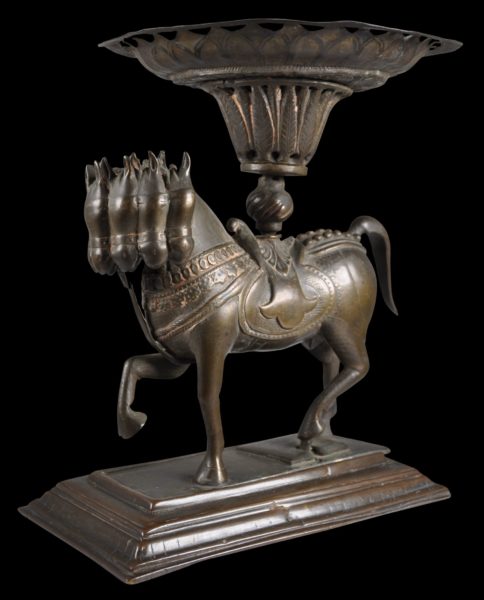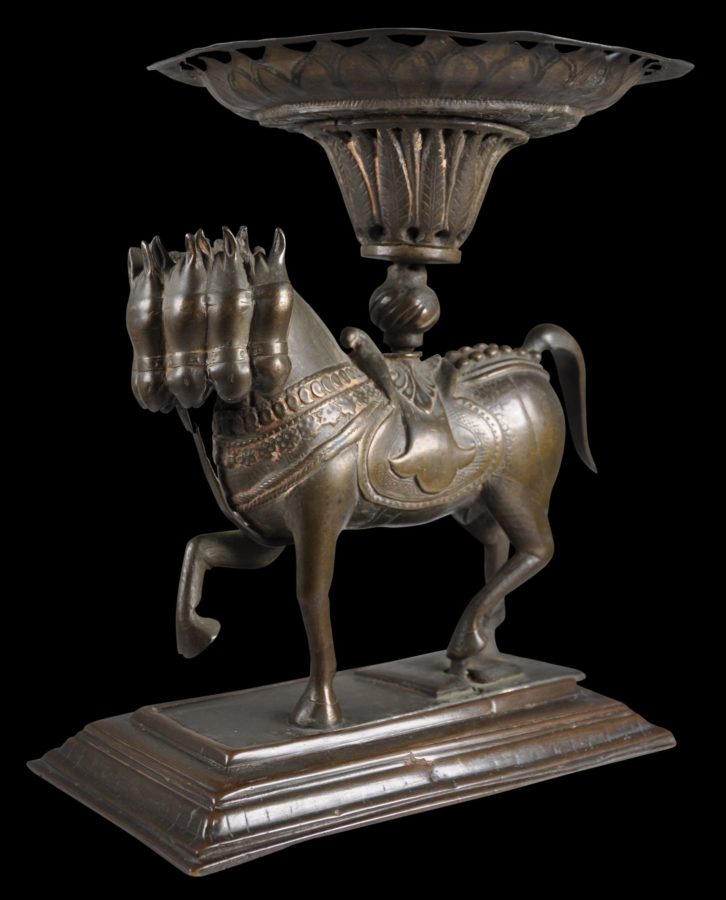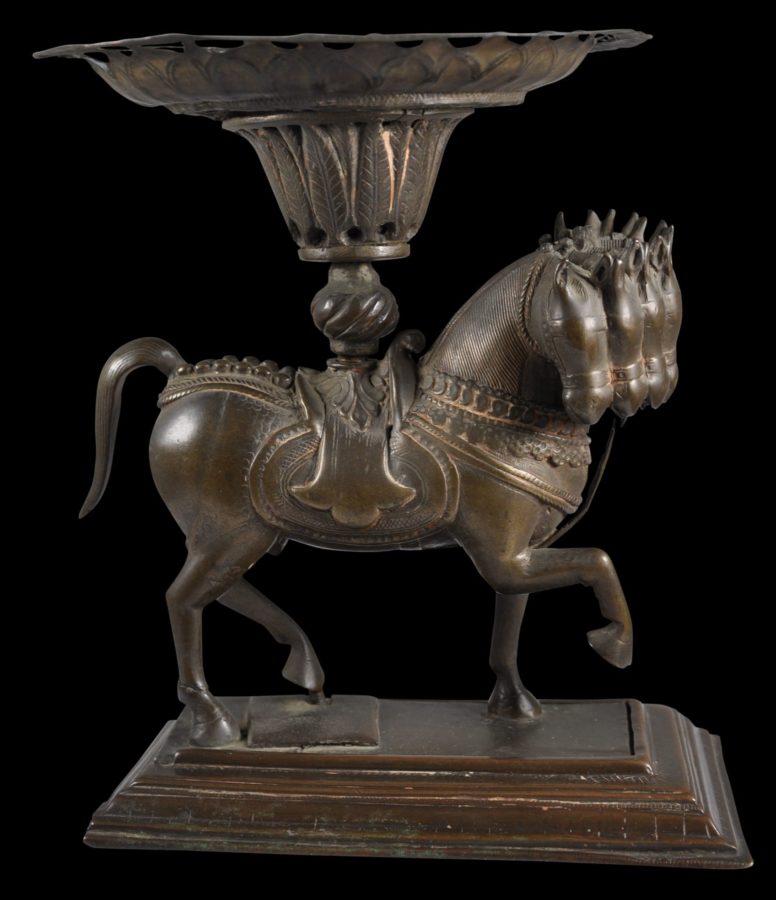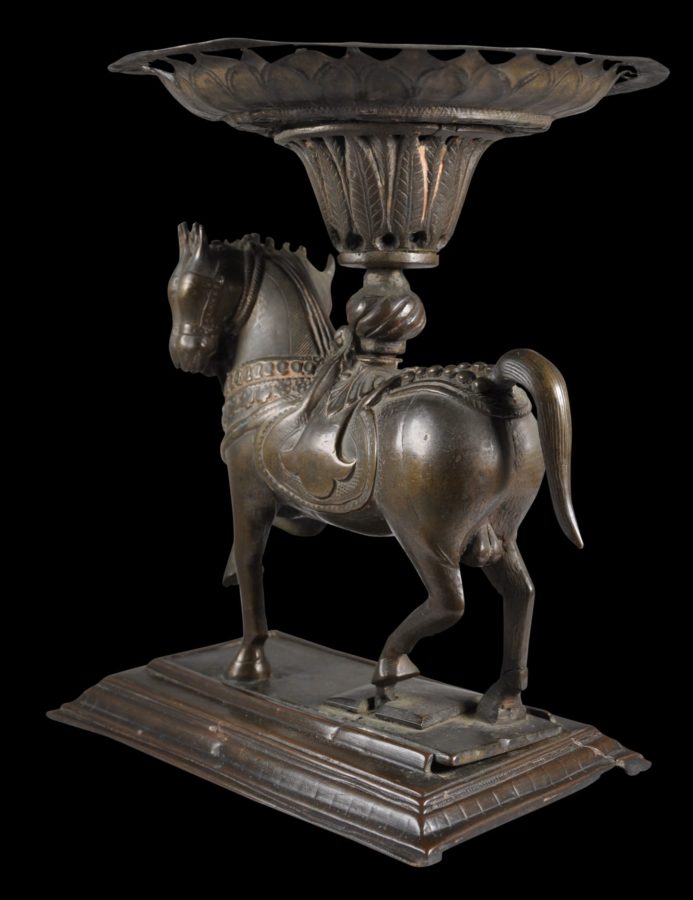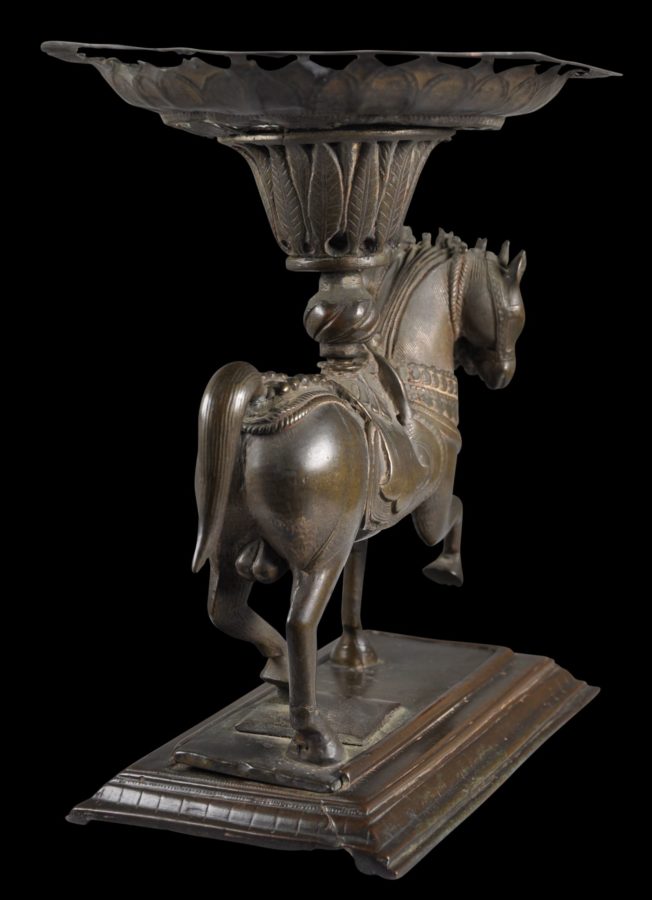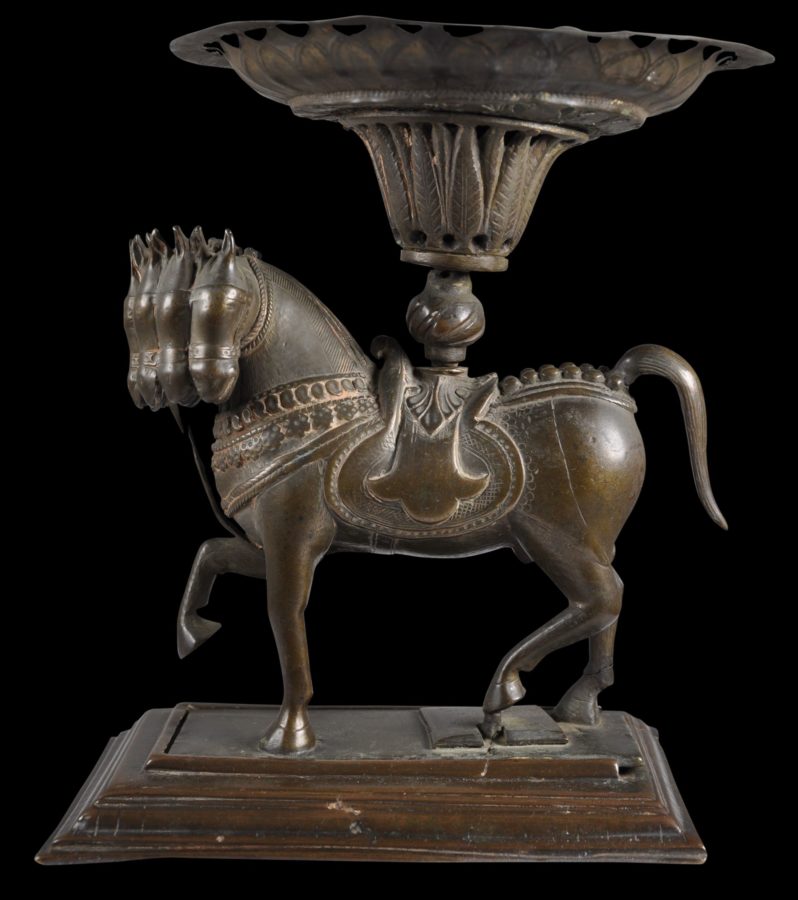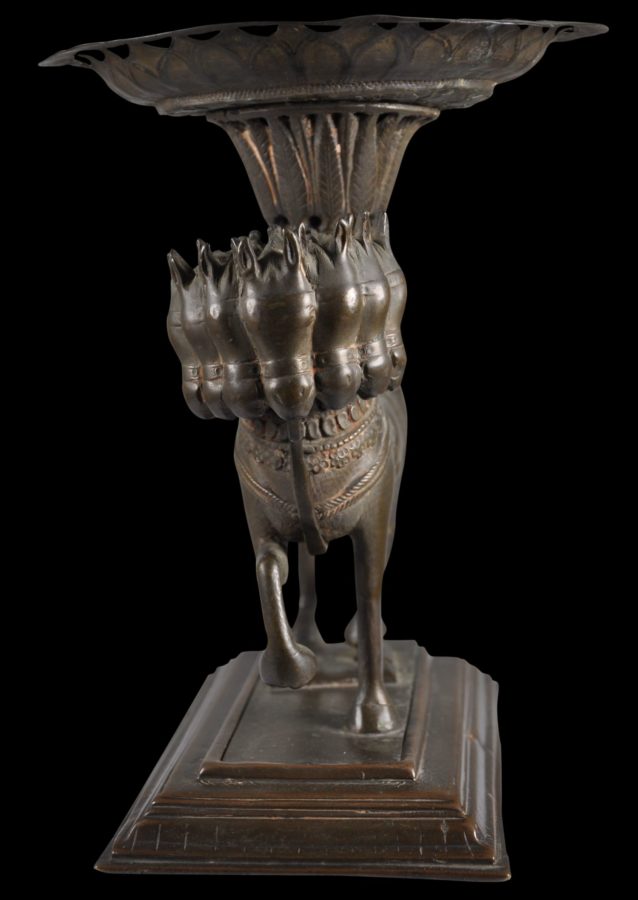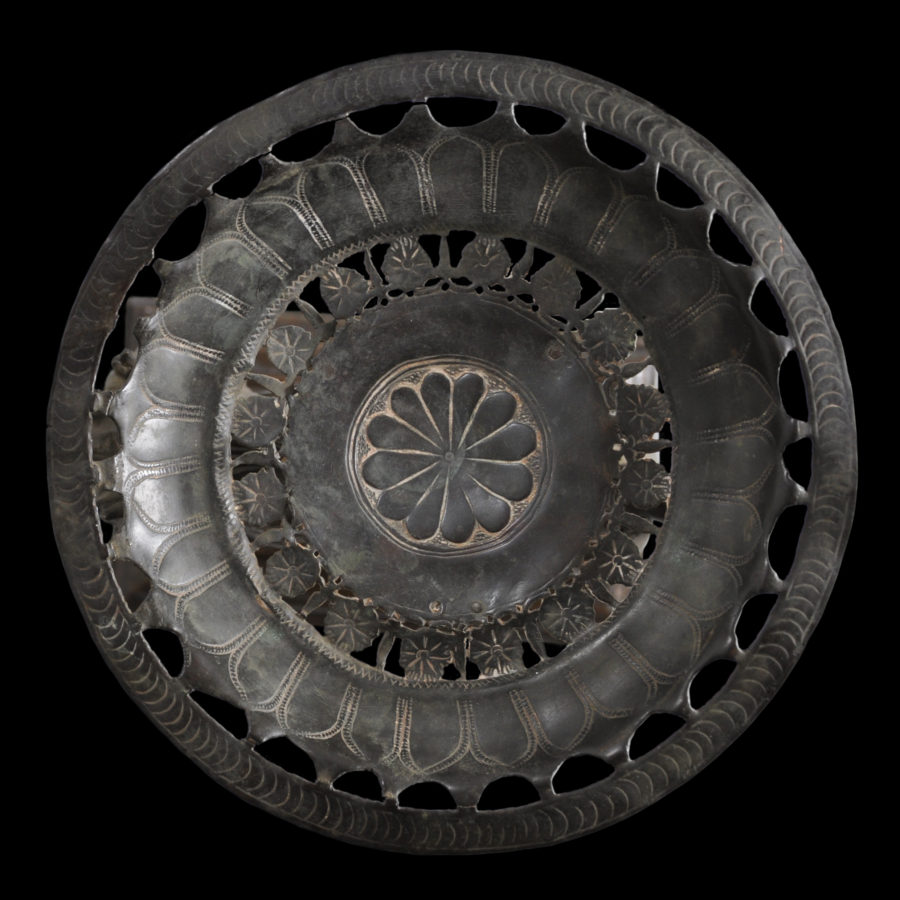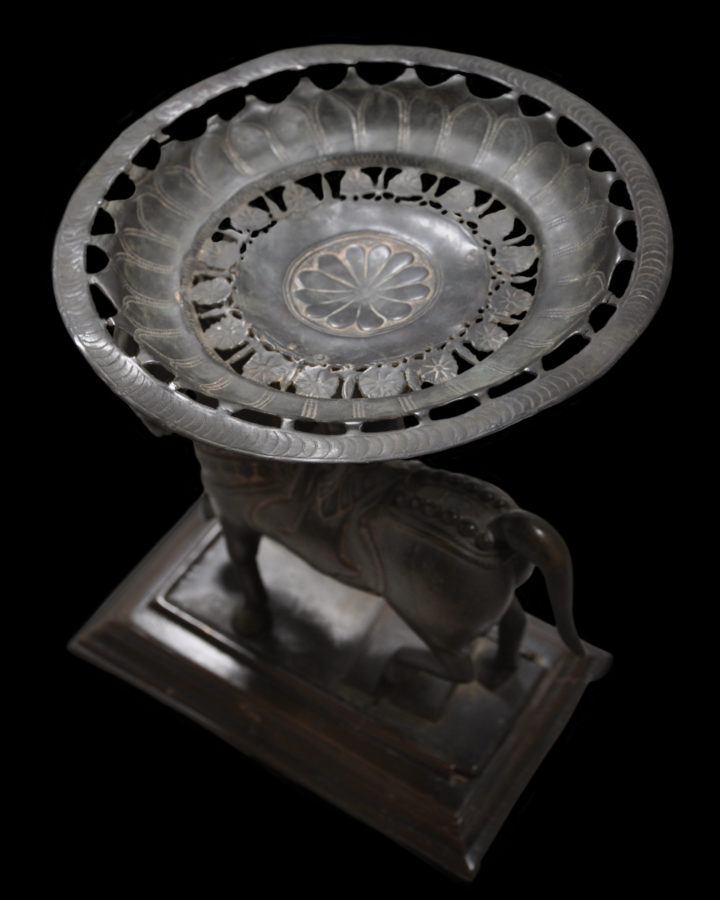This bronze votive stand incorporates a rare representation of Uchchaihshravas, the seven-headed horse that pulls the chariot of Surya or Savitar, the Hindu sun god.
The body of the horse is very finely rendered. It has a prominent tail and the multiple heads are clearly delineated. It has a saddle and ornaments in the fork of flower blossoms and mangoes.
The multiple ears of the horse are small and pointed – this is deliberate and also points to the provenance of the piece. These are the ears of the Kathiawari breed of horse from Gujarat and Rajasthan which have such characteristics ears.
The horse stands on a plaque (with an old repair) that slides into a rectangular, tiered dais. The underside of the base has been fitted with a small bronze wheel. The stand sits flat so it is not clear quite what the purpose is of this wheel.
An offering tray screws into the saddle on the horse. The dish of the tray is pierced and decorated with flower motifs.
Surya is considered the centre of creation, and a source of light, warmth, life and knowledge. He was regarded as the solar deity from very early on. Surya rides in a chariot driven by his charioteer Aruna pulled by seven horses, or by one horse with seven heads (Uchchaihshravas). The chariot has only one wheel, suggesting the annual cycle of the seasons. Aruna has no legs and is the brother of Garuda, whose body protects the world from the scorching sun.
The votive stand and image of Uchchaihshravas is in fine condition. There are some breaks in the pierce tray where some of the spokes have come away from the tray’s edge. The image is of a good size and has a dark chocolate patina.
References
Dallapiccola, A.L., Dictionary of Hindu Lore and Legend, Thames & Hudson, 2002.
Gupta, S.P. (ed.), Masterpieces from the National Museum Collection, National Museum, New Delhi, 1985.


